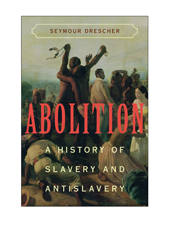14 - Reversion in Europe
Published online by Cambridge University Press: 04 August 2010
Summary
The centenary of British colonial slave emancipation in 1933, was celebrated as a national and imperial triumph. The city of Hull, the home town of Wilberforce, was the designated site of celebration. A great civic procession led by Hull's Lord Mayor and a host of dignitaries and descendants of the liberator filed past his birthplace, his grammar school, and its assembled students. The Archbishop of York consecrated the proceedings, accompanied by the hymns and spirituals of black and white choruses. The flags of fifty nations were simultaneous unfurled before tens of thousands of spectators. The Times headlined the events at Hull as the “Centenary of Wilberforce.”
For the reigning historians of England, emancipation had raised all of mankind to a higher moral plane. Antislavery's expansion to global proportions was the purest evidence of human progress. The historians never wearied of repeating William Lecky's designation of the fight against slavery as “among the three or four virtuous pages in the history of nations.” The beneficiaries were also evoked: West Indian slaves who had devoutly assembled on the hilltop during the night before liberation awaiting the sunrise of freedom and the natives of Africa, as yet unaware in 1833 that British imperial expansion would entail the slow death of the institution in their own “heart of darkness.” Here, if anywhere, in the historiography of slavery lay the watershed event in the progressive interpretation of history.
- Type
- Chapter
- Information
- AbolitionA History of Slavery and Antislavery, pp. 415 - 456Publisher: Cambridge University PressPrint publication year: 2009



